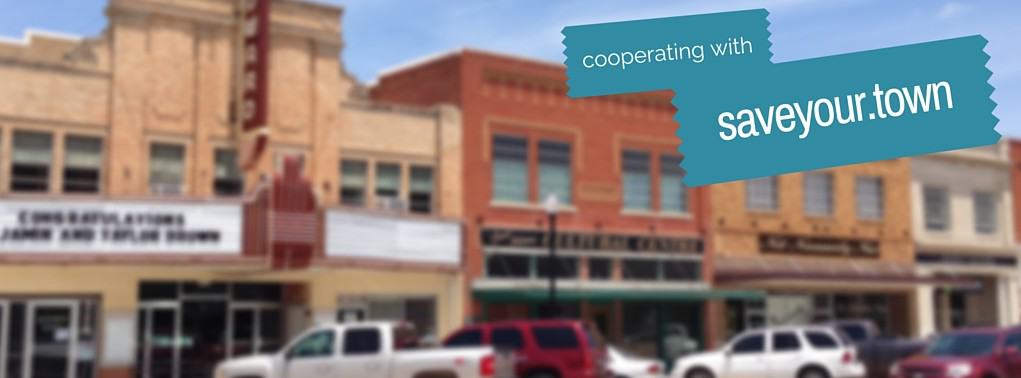
You have to share the details so people want to visit your small town. Rodeo mural, Freedom, Oklahoma. Photo by Becky McCray.
In general, towns are more or less the same. Streets, houses, trees. It’s the details that make one different. Sitting down for a meal in the restored Harvey House in Waynoka, Oklahoma. Watching the white-haired men lawn bowling at the seaside on the Isle of Skye, Scotland. Enjoying a scoop of juneberry ice cream in the state’s last independent dairy cooperative’s ice cream parlor in Bottineau, North Dakota.
“It’s the specificity of a place that matters,” Zita Cobb said, speaking at The Georgetown Conference. Specific places have intrinsic value. The more specifically you can describe a place, the more that people can recognize its value.
Is it enough to invite you to visit a small-town rodeo in Western Oklahoma? Or should I invite you to be part of a traditional small-town rodeo, sitting outdoors among locals and old cowhands on the open wooden bleachers within sight of ranches still worked the old-fashioned way, from horseback? You can cheer for the cowboys and cowgirls as they kick up dust racing across the arena. Later, when the sun goes down, you can join the rodeo-ers and locals downtown between the rows of wooden store-fronts when they close the main street for a dance under the stars. It’s the Freedom Rodeo and Old Cowhand Reunion, the third weekend in August, in Freedom, Oklahoma.
It’s the specificity that makes the difference. There are lots of rodeos, but few still held outdoors, fewer still that hold a street dance in an old-style downtown. Details sell.
To share those details with the world of your small town’s potential visitors, you have to notice them. Because you live here, you don’t notice these details anymore. You need to walk through an exercise that helps you get specific.
The 8 Rural Culture Elements developed by the Kansas Sampler Foundation will help you get specific. It asks you to describe your town in detail in 8 categories:
- Architecture
- Art
- Commerce
- Cuisine
- Customs
- Geography
- History
- People
I used the 8 Rural Culture Elements and my neighboring town of Okeene, Oklahoma, to show how you can drill down to the details. Here’s a short excerpt:
“Customs. The annual Okeene Rattlesnake Hunt is probably the best known Okeene tradition. Another annual tradition is the Whea Esta festival. It’s a cross between a local version of the county fair and a heritage festival. I live about an hour away from Okeene, and I didn’t know anything about it. I think this is their huge, undiscovered tourism gem.”
None of the local people from Okeene thought the Whea Esta festival was anything special, but my outside perspective told me it was an amazing connection to their local culture. And that’s the best part about bringing in an outside person who will ask questions and using a framework like the 8 Rural Culture Elements to guide your investigation of your town.
For your next tourism project or marketing, focus on finding and including the details. And let us know how it goes.
New to SmallBizSurvival.com? Take the Guided Tour. Like what you see? Get our updates.











Reminds me a bit of the murals in Columbia Falls, MT http://www.columbiafallschamber.org/murals/
Mark, what I love about the Columbia Falls murals is that they depict real people, and the website even names names and tells stories. That’s terrific!
How timely. Have some communities looking at this right now.
Great, Glenn! Get them to look deep for those details.
I agree. There has to be something about the town that makes it unique. It can be a product or an activity that can only be done in that particular location.